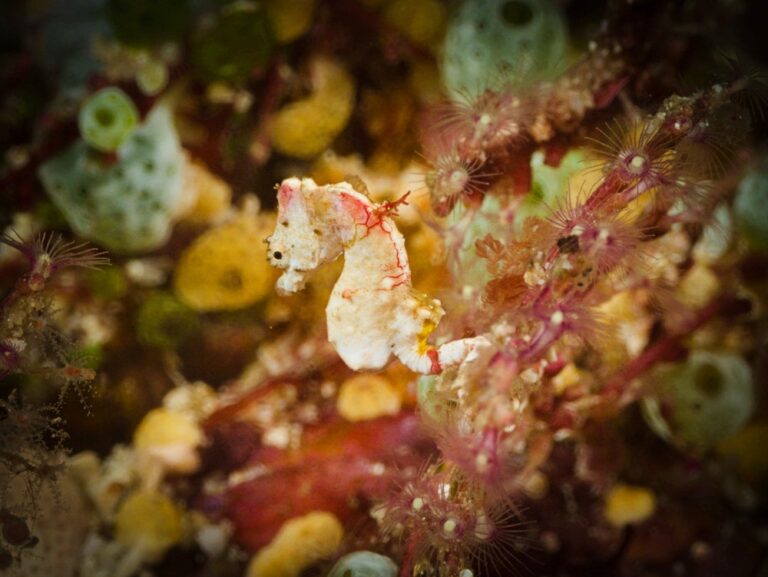The first day’s diving from Extra Divers Spice Island Resort seems to cover all the angles, and in some style. So how do you follow that? asks JOHN LIDDIARD. He soon finds out
Back in the day, seeing a barrel-sponge squat lobster would have made the trip. Our guide Erick finds one in the first few minutes of the first dive.
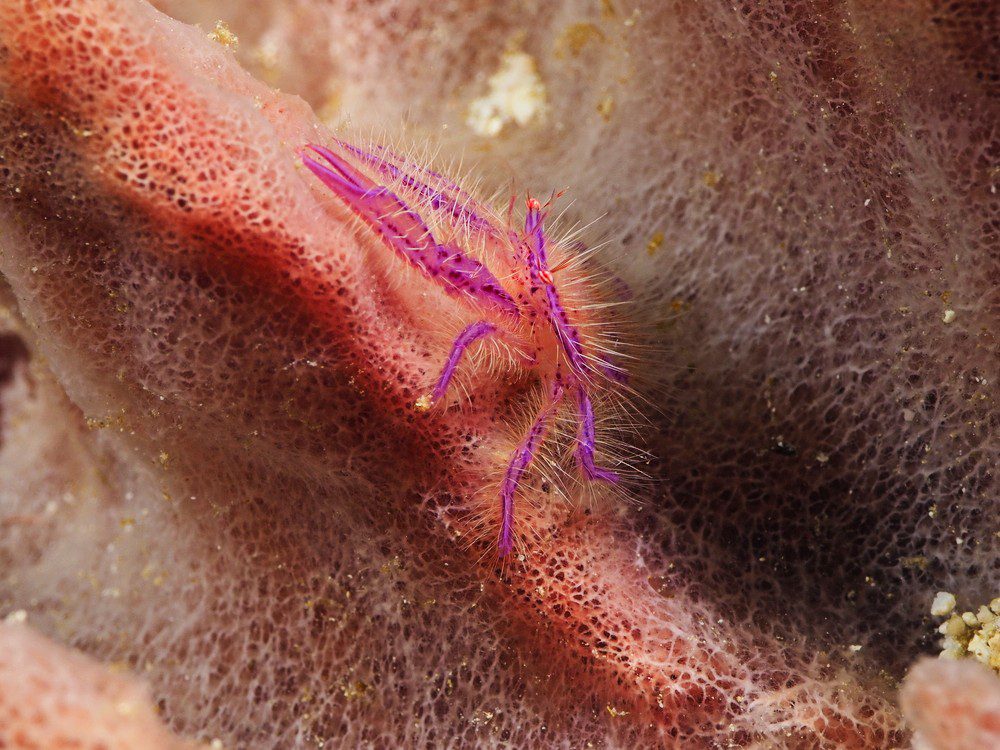
Back in the day, finding a pygmy seahorse would have made the trip. Our guide Erick finds one a few minutes later, of the Bargibant’s variety we popularly think of as the pygmy seahorse.
Then, over the next two dives, he finds more, including the Denise variety and the Pontoh variety. In between pygmy seahorses we have ornate ghost pipefish, a selection of nudibranchs, other slugs and flatworms, soft coral crabs, a hawksbill turtle, a hairy shrimp too small to show up as anything other than a 2mm hairball, and blacktip sharks cruising by, barely discernible off the reef.
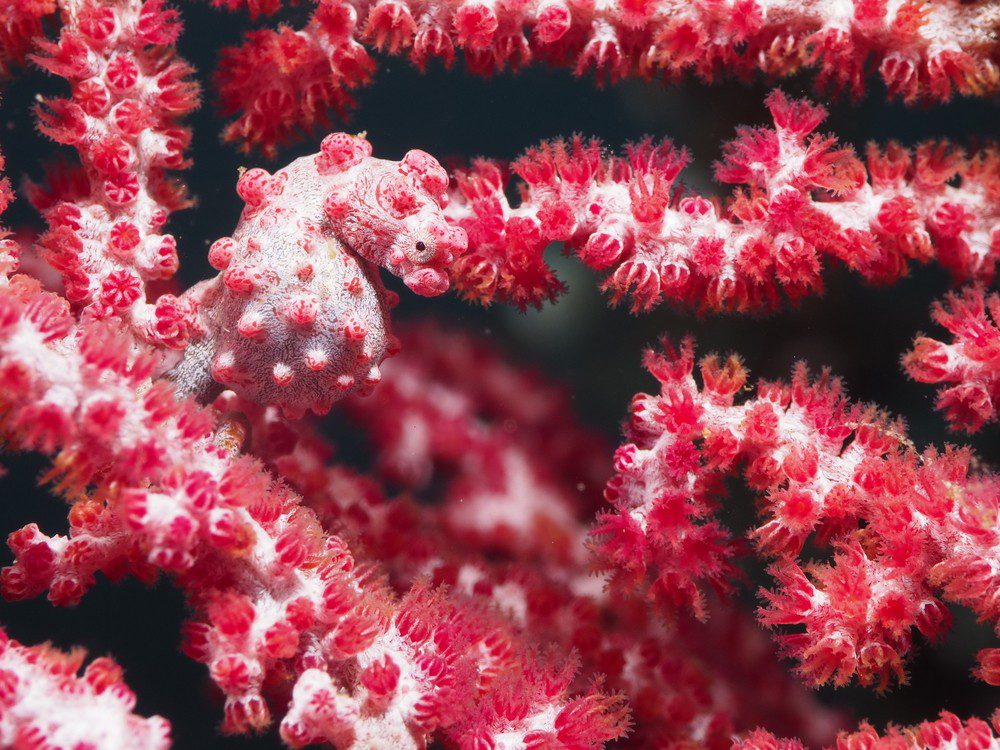
Back in the day, day one would have been the trip. That’s it. Been there. Seen it all. Got the T-shirt. Time to head home.
Which begs the question: what do we do for the rest of the trip?
Halfway Halmahera
Extra Divers Spice Island is located on Kusu island in the Halmahera province of Indonesia, which broadly covers the Maluku islands. It’s a couple of hours flying directly east from Manado and Sulawesi, pretty much halfway between Sulawesi and Raja Ampat.
Maluku is a few big islands similar in size to the other big islands of Indonesia, with countless small islands littered about.
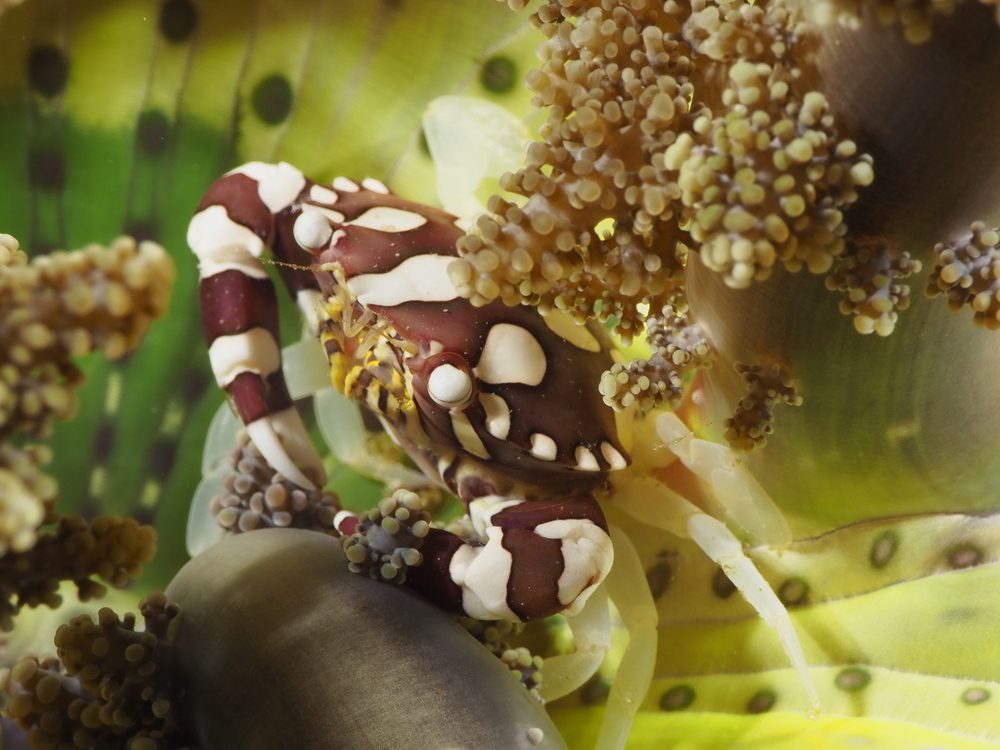
Kusu Island is one of a string of islands at the narrow point between Bacan Island and Halmahera Island. As with any such channel, marine life is prolific in the current, with the tide running strongly north to south and vice versa twice a day.
Kusu is just big enough for the resort and dive-centre with a big hill of protected jungle behind it. No island village, no other inhabitants.

This is where you go in Indonesia to get away from the busier destinations. A couple of the nearby islands have similarly sized small dive-resorts. Their dive-boats are busy enough, but we don’t run into them on dives except for a five-minute overlap at one site. It’s one of those places where there is so much good diving and so few divers that no-one needs to crowd.
Of course, it’s not sensible to dive all sites all of the time. The tides create swirls and eddies about the islands. The corals and fish get fed with passing water; we dive where there is a lee or a slack.
Our boat-captain knows where the conditions are safe. The dive-guides find us cool stuff. The regular briefing is that: “This site is good for big and small things. We will look for the small animals. For big fish, look out into the blue and you can find them for yourself.”


Not that it stops our guides clanging tanks when a shark glides past, or a Napoleon wrasse or bumphead parrotfish appears over the reef. As with the best of Indonesia, the guides are here to show us stuff, not to nanny or over-manage a flock of dive-sheep.
They all learnt their trade in Bunaken, Lembeh or the other critter hotspots near Manado – then brought their expertise here.
Resort manager Kurt sums it up: “It’s rare that we have guests with fewer than 500 dives. All our guests are experienced divers. They don’t need micro-managing. They just need an expert eye to show them the best there is to be found.”
Despite many trips to the Coral Triangle, I wish I had developed that expert eye. I am not a total incompetent at finding stuff. Shrimps bigger than a hairball, I can find. Porcelain crabs I can search anemones for. I’m not that bad at spotting nudibranchs, though my wife is much better than me. But pygmy seahorses – next to impossible for me.
Getting your eye in
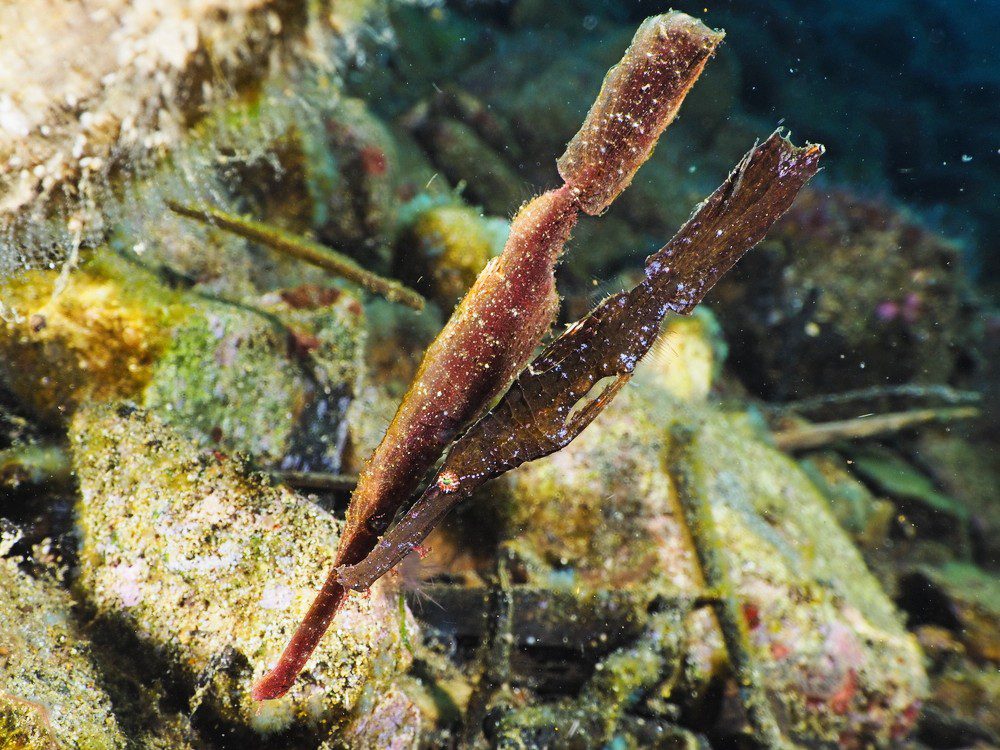
I’m just looking up from a pair of robust ghost pipefish when a photographer diving with the other guide from our boat waves for my attention. I follow him off across and down the slope to a rock where I had previously noticed him buried in his camera.
He makes the seahorse sign, a sort of ‘giddy-up’ mime. He points to a scraggly hydroid-covered patch but, after looking for a minute or so, he can’t find it again and signals that its up to me now.
Five minutes later, I’m on the point of giving up when I find it. A Pontoh’s pygmy seahorse.
So am I a pygmy seahorse finder? Not really. The guide had found it and pointed it out to my fellow photographer. When finished, he had pointed the rock out to me. I had searched a patch of habitat the size of an A4 sheet of paper to find it again.
A lot of the trick is knowing the habitat, but there is always a lot of habitat to search. Maybe I could kid myself I am a junior junior junior pygmy seahorse finder by the local standards.
Air and nitrox
We have enough divers on the boat to split into two groups between two guides with two to four divers each. Any more and Extra Divers run the second boat.
The split is simple, one group diving nitrox and the other diving air. Nitrox is really there for those wanting an extra safety measure so far away from any recompression facility.
Dives wander down to 20 or 25m and back again, with a massive time shallow at the end. We are usually at the edge of contact with the other group, so the guides and divers help each other out. We all benefit from two pairs of local eyes for the critter-spotting.
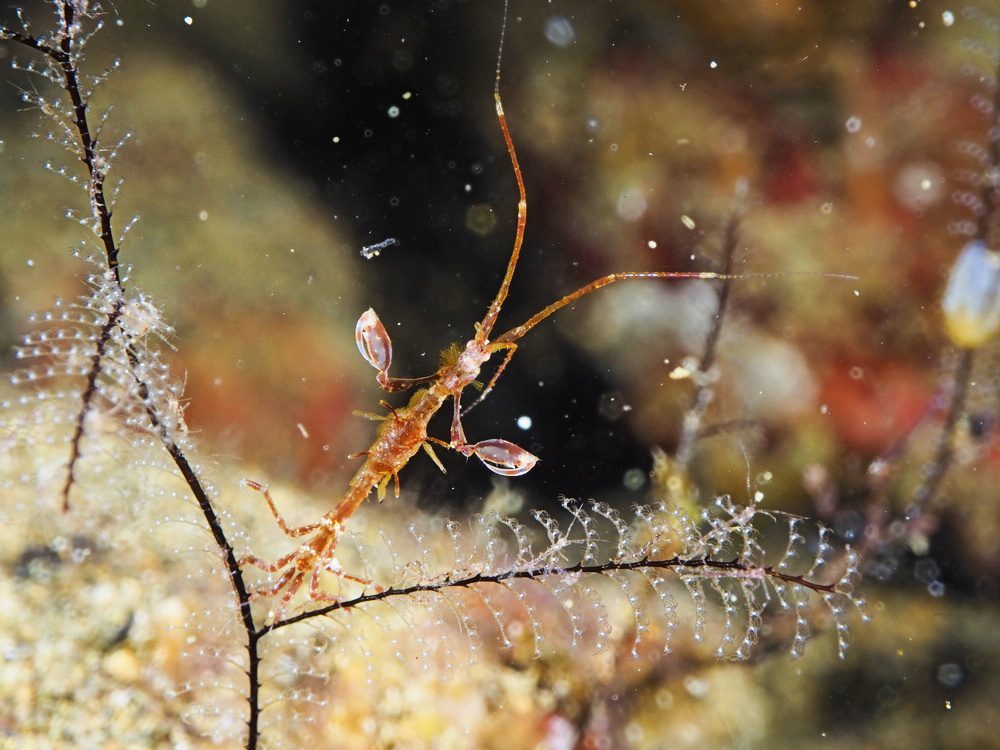

Nearly everyone has a camera, some larger housed systems, others with compacts in plastic box housings and GoPros. The Olympus Tough series is predominant among those favouring critters. Microscope mode is perfect for the little beasties.
Most dive-sites share a similar topology. A fringing reef slopes down and is broken up by rubble patches to a deeper sandy slope with outcrops of coral rock. Some are clearer with light sand, others a little bit mucky, some dark and volcanic, and some very mucky.
The house-reef is an exception. It’s called the house-reef, but would be better described as the house-channel. I can see the current surging from our bungalow. With that in mind, it’s accessible as a boat-dive once a day during daylight on most days.
The hard and soft coral on the house-reef is superb. Excellent condition, high coverage, beautifully intact and 10 times as many fish as anywhere else – which translates into a hell of a lot of fish.
This is the place to dive for the big scenes, though Erick finds us a pygmy seahorse and a soft coral crab, not the first and not the last. He finds them at least once a day, and multiples on some dives.
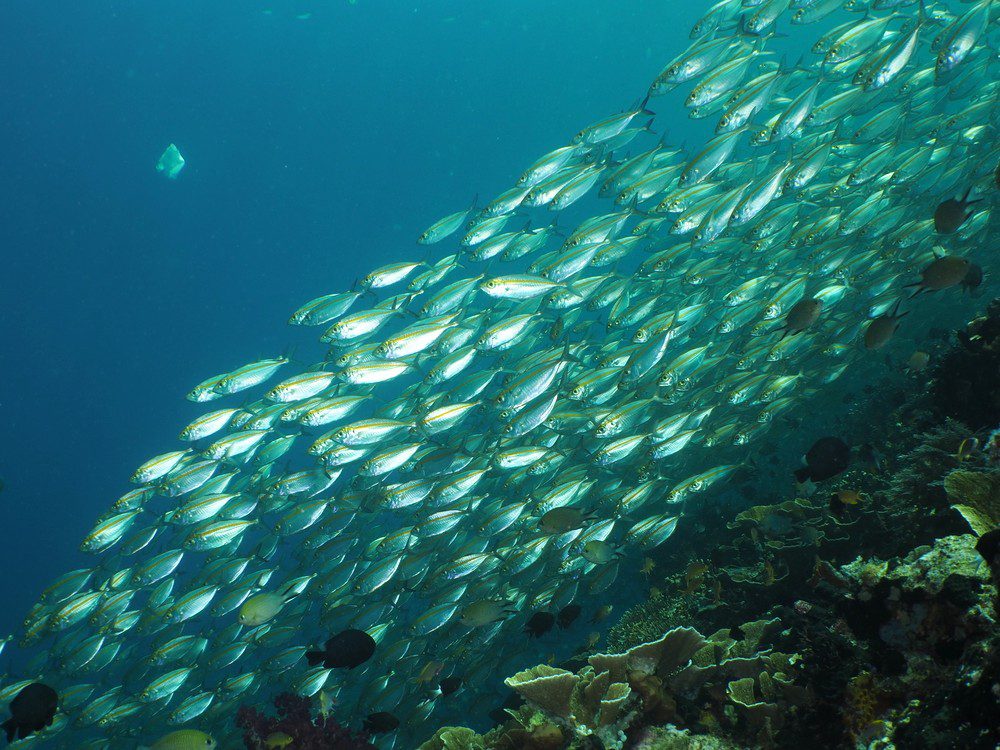
A couple of hundred metres off the house-reef, the coral rises again to a plateau at 18m. The dive-site here is called simply Buoy No 2, where we wait for the tide to slacken, tie off and follow the line down.
Like the house-reef, it’s covered with fish from small to very big, including a family of potato grouper that disappear deep beneath an overhand at their first sighting of divers.
After a sting ray and a few sharks off the wall, my attention is drawn to another Brabant pygmy seahorse in a fan, and then a ghost pipefish right at the time we really should be heading back up the line.
So far I have been diving air and have not found it at all limiting, but Buoy No 2 is a site where I would definitely have opted for nitrox.
Is there a Buoy No 1? you ask. It’s at the other end of the plateau and 10m deeper. Buoy Nor 2 has a better slack water and makes more sense as a dive.
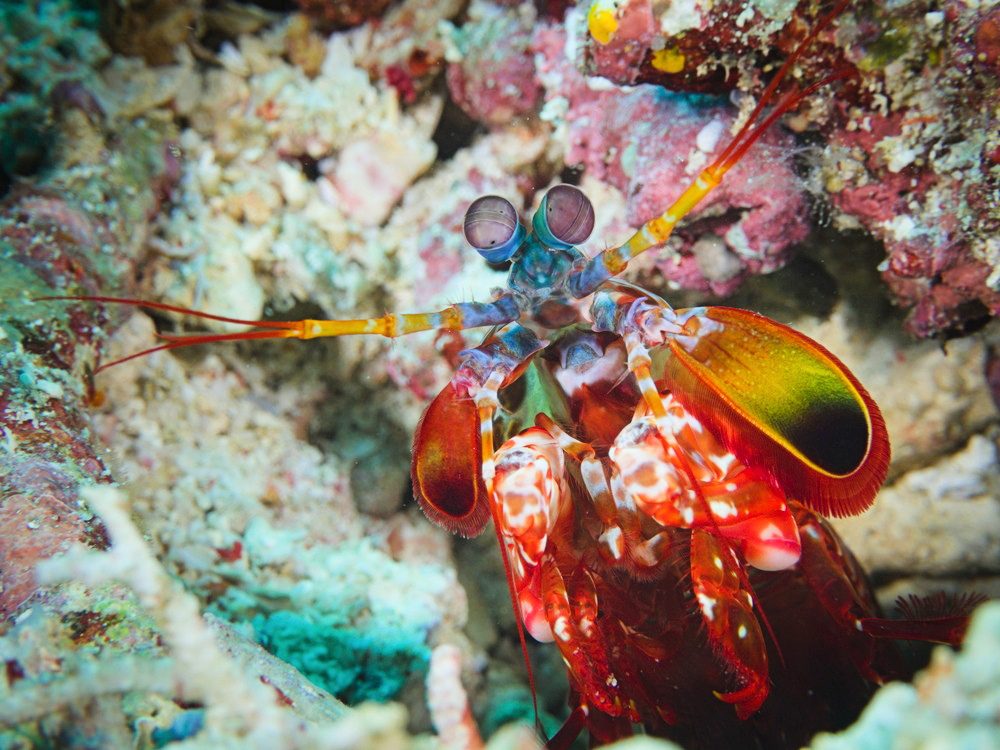
With any channel such as the house-reef, the other obvious diving question is: “What is at the other side of the channel?”. This brings us full circle. Less than 1km away, the other side of the channel include the sites Tanjun Baku and Tanjun Kusa, where we started our first day with the first of countless pygmy seahorses and wondered what we would be doing for the rest of the week.
Well, sort of full circle, but let me tell you about a diversion into real muck – the kind of muck-diving you would expect at Lembeh.
Around the pier-legs
Fifteen minutes away is Karao, a typical local village with a new pier and an old one. Above the old pier the children wave in excitement at an incoming boat. Below the old pier is mucky black volcanic sand, plenty of accumulated rubbish, and pier-legs festooned with gorgonians and absolutely hordes of ornate ghost pipefish.
How many ghost pipefish can I fit into one photograph? Nowhere near as many as I can see, because the visibility is limited and they disappear into minuscule strips of fuzz unless they are right up against a wide-angle lens.
Round about the pier-legs I can’t get them all, so I concentrate on the best: a striking, just off-white solo specimen with a pink gorgonian for a background.
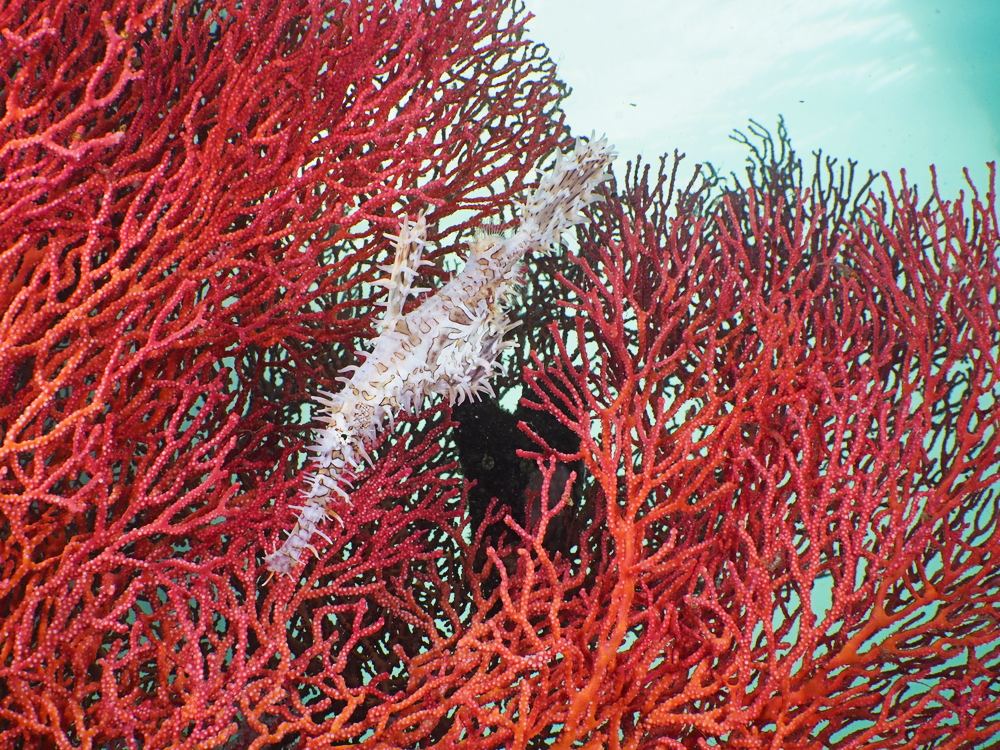
I have lost track of time. So has my dive computer, because it hasn’t been counting the really shallow part of the pier-legs. It has an option to do that, but I had neglected to select ‘yes’ while my head was buried in my camera viewfinder, picking out ornate ghost pipefish.
Erick clangs and signals time to head down the slope. The silty black sand continues into a black gloom beyond the 21m at which we stop. Not for any reason, other than that there is more than enough to see without going deeper.
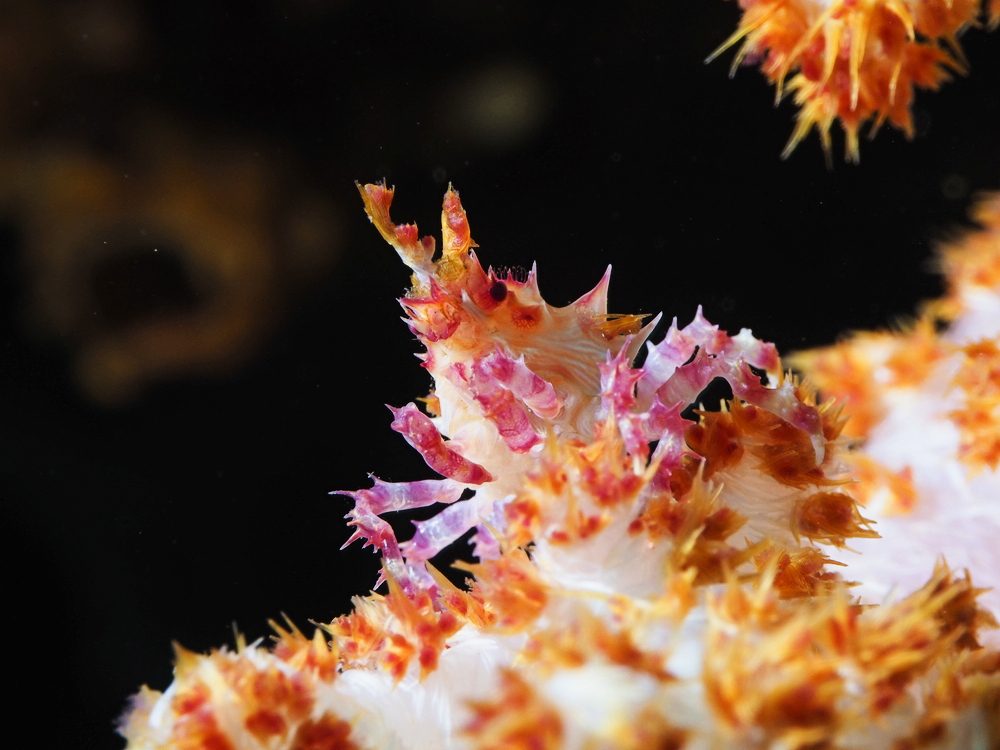

Various crabs, mantis shrimps, pufferfish, regular pipefish and more ghost pipefish, and plenty of nudibranchs, big and small. The nudibranchs include a couple of varieties I don’t remember having seen before, so I am accumulating homework to look them up in a guidebook.
Every trip to Indonesia reveals a different balance of macro life. On this trip we have countless pygmy seahorses, ghost pipefish, soft coral crabs and barrel-sponge squat lobsters but not so many porcelain crabs or shrimps. We do find them, just not under every coral or anemone. It could be location, it could be time of year, or perhaps a mixture of both.
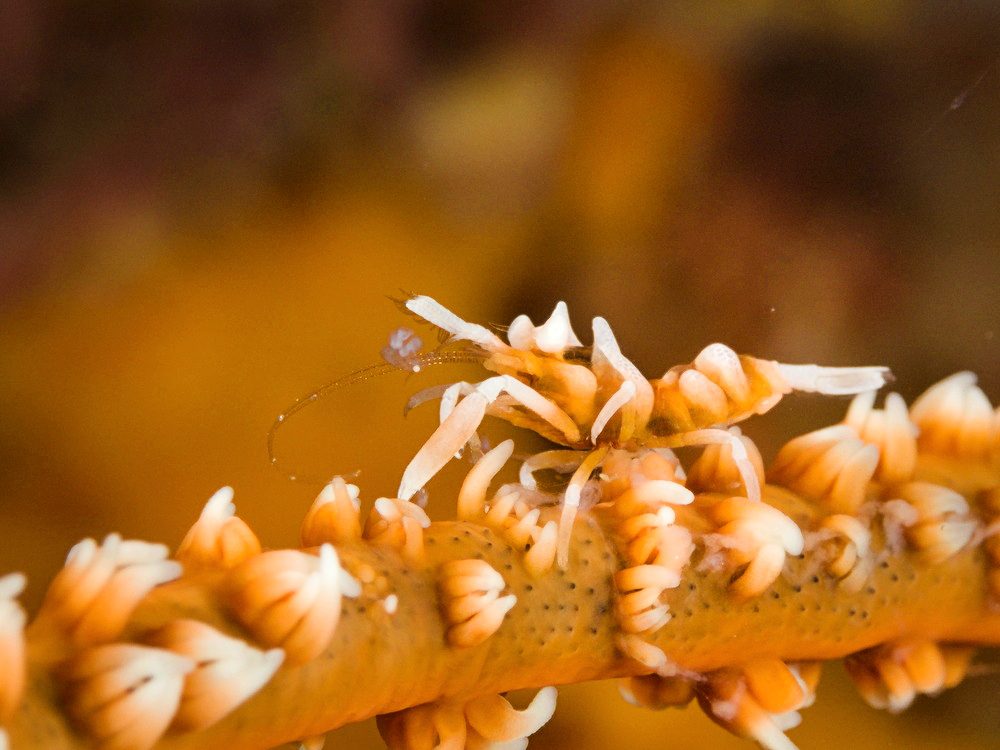
Between dives is the usual eat and sleep, and that is it. This is a destination for dedicated divers. There is plenty of scenery for those liking the big picture, sharks and bigger fish for those wanting to hang off the reef and hope for that magical encounter and while, this is not a dedicated critter location, no one wanting to see critters could be disappointed. If you want to see anything else, Kurt can arrange excursions to various villages.
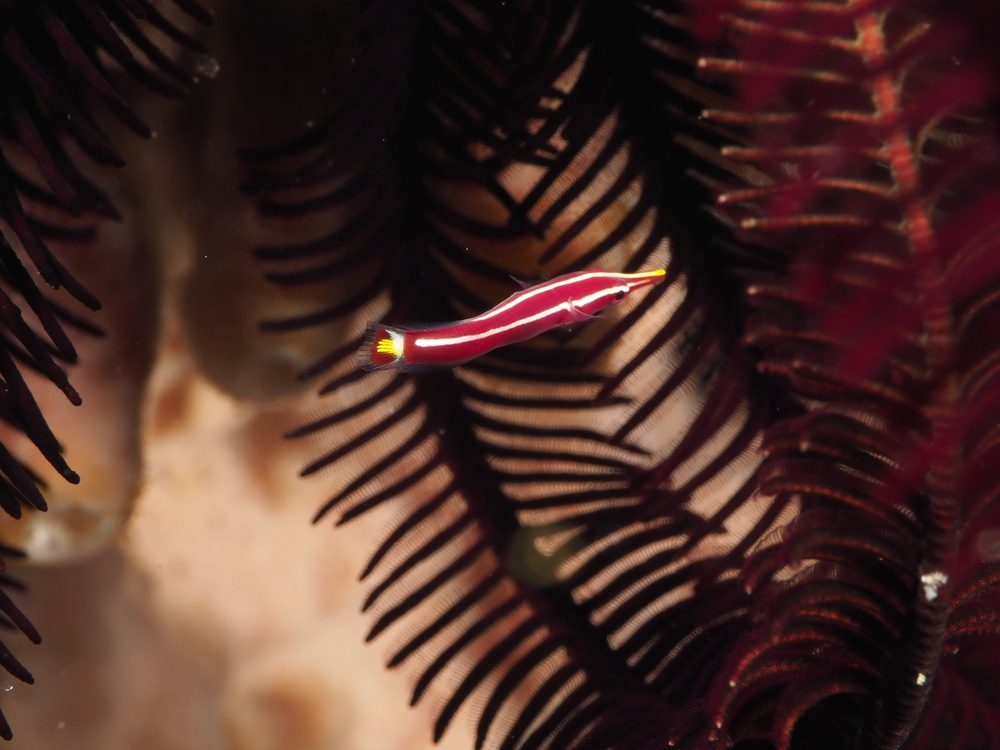
On the eating front, Extra Divers Spice Island scores exceptionally well. Before getting into the diving business, Kurt used to be a chef and owned a restaurant in Switzerland. That shows in the choice, quality and presentation of the food.
The kitchen even has an ice-cream machine with daily production of various tropical fruit ice-creams as one of the dessert options. My vote is for the mango.
As Kurt sums it up, divers who have travelled this far have come here to dive. They need a clean place to stay, good food and good diving. Extra Divers Spice Island scores on all three. Comfortable and clean air-conditioned bungalows, food that is both tasty and well-presented, and diving to match.
Factfile
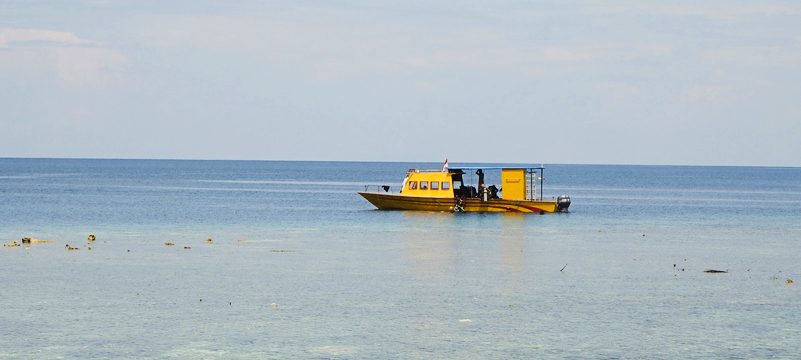
GETTING THERE: John Liddiard flew with Singapore and Scoot Airlines for an overnight stop in Manado, then Wings Air to Labuha. The transfer to Extra Divers Spice Island Resort then takes about an hour by car and boat. Return flights follow a slightly different route for better connections with Batik Air to an overnight in Jakarta and then Singapore Airlines via Singapore. Travel from the UK was booked through Dive Worldwide.
DIVING & ACCOMMODATION: Diving was based at Extra Divers Spice Island Resort. Accommodation is in air-conditioned bungalows along the beach.
MONEY: Indonesian rupiah (100,000 rupiah is about £6).
BOOKINGS: Dive Worldwide can arrange a 13-day / 12-night trip that includes return International and domestic flights, with two nights in Manado on the way out and on the return, plus all transfers. Guests get nine days / eight nights at Spice Island on half-board, enjoying 10 dives each. Additional diving is available on request. The price of the trip is £2,665pp (two sharing).
All photography by John Liddiard
Also on Divernet: Sali Army, The 39 Dives, Surprise surprise
